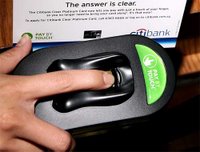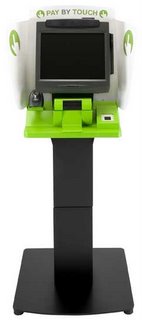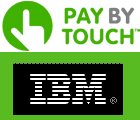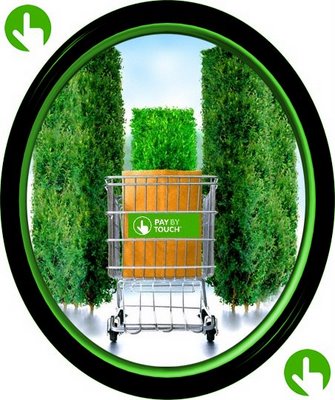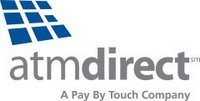
 Becky Yerak
Becky YerakPublished December 29, 2006
Pay By Touch, the company that enables shoppers to pay through fingerscan verification rather than old-school cash or plastic swiping, continues to attract financing and beef up its management ranks, recently adding a former Home Depot Inc. and Sears, Roebuck and Co. executive to its payroll.
In January 2006 the privately held San Francisco-based company disclosed it had raised $190 million in financing from such investors as hedge funds Plainfield Asset Management LLC and Scout Capital Management LLC during a three-month period.
To date the company has raised more than $300 million in debt and equity financing from both existing and new investors, Pay By Touch President John Morris said in an interview Thursday.
 "Things are going great, and we're building the business like mad," he said. "This is one of the rare times where you can deliver a win-win situation to everyone...identity theft prevention for the shopper, better security in terms of fraud for the retailer and increased speed and convenience."
"Things are going great, and we're building the business like mad," he said. "This is one of the rare times where you can deliver a win-win situation to everyone...identity theft prevention for the shopper, better security in terms of fraud for the retailer and increased speed and convenience."Pay By Touch's patented biometric services enable shoppers to quickly access personal accounts using a finger scan to identify themselves, make purchases and earn rewards.
Rewarding Experience
Two weeks ago the firm purchased S&H Green Stamps, a company founded in 1896, and the first company to introduce the rewards concept. PBT intends to integrate the Green Points program with their personalized marketing division, called SmartShop.
Strategic Partners
Another reason investors feel good about Pay By Touch is because of whom they have been able to develop strategic partnerships with. To date, PBT has formulated strategic partnerships with some of the world's biggest and most respected companies, This impressive list includes IBM, NEC, Citibank, Discover, Microsoft, Accenture, Verifone and UPEK. The relationships are solid. IBM and NEC have installed Pay By Touch sensors in their hardware, Microsoft is using PBT as a payment processing partner with their new Vista operating system, due out next month, and UPEK is certified to enable PBT transactions via biometric sensors in all Lenova (formerly IBM) Thinkpads.
 The use of the Pay By Touch fingerscan systems also coincides with the use of other biometrics in financial transactions. After conducting tests for three months, Citibank recently joined forces with Pay By Touch, and invested millions of dollars to introduce the world's first biometric credit card in Singapore.
The use of the Pay By Touch fingerscan systems also coincides with the use of other biometrics in financial transactions. After conducting tests for three months, Citibank recently joined forces with Pay By Touch, and invested millions of dollars to introduce the world's first biometric credit card in Singapore.Impressive Management Team
Pay By Touch's success has enabled it to attract high-profile talent, including former managers from such companies as IBM, Visa, MasterCard, Accenture, and Bank of America.
Joining Pay By Touch in September was John Costello, former executive vice president of merchandising and marketing for Home Depot. Costello filled the new post of president of consumer and retail operations, one of the top three jobs at the company.
Costello reports to John Rogers, Pay By Touch founder, chairman and chief executive. Costello will also serve on the firm's board of directors.
Costello joined Home Depot in November 2002 and was instrumental in the "You can do it, we can help" campaign. He left the home improvement chain in August 2005. Before Home Depot he was chief global marketing officer at Yahoo, and from 1993 to 1998 was senior executive vice president of Hoffman Estates-based Sears, leading its "Softer Side" marketing campaign.
Enrollment Numbers Increasing
 In a story in March about the rollout of Pay By Touch in all 204 Jewel and Jewel-Osco stores, the Chicago Tribune reported that nearly 10,000 people had signed up since it was unveiled in January, citing store officials. Asked about enrollment Thursday, Morris would say only "it's tens of thousands, many more than 10,000 Chicagoans who have enrolled." In September, a Chicagoan, Mary Rodriguez, became Pay By Touch's 3 Millionth customer, and was honored at Wrigley Field.
In a story in March about the rollout of Pay By Touch in all 204 Jewel and Jewel-Osco stores, the Chicago Tribune reported that nearly 10,000 people had signed up since it was unveiled in January, citing store officials. Asked about enrollment Thursday, Morris would say only "it's tens of thousands, many more than 10,000 Chicagoans who have enrolled." In September, a Chicagoan, Mary Rodriguez, became Pay By Touch's 3 Millionth customer, and was honored at Wrigley Field."Chicago is doing great," he said. "We're up double-digits both on enrollments and transactions" percentage-wise since a November promotion in Chicago with a former "Trading Spaces" star.
"We'll have more retailers in Chicagoland in the first quarter," he said, declining to be more specific.
byerak@tribune.com
Copyright © 2006, Chicago Tribune
.jpg)

























